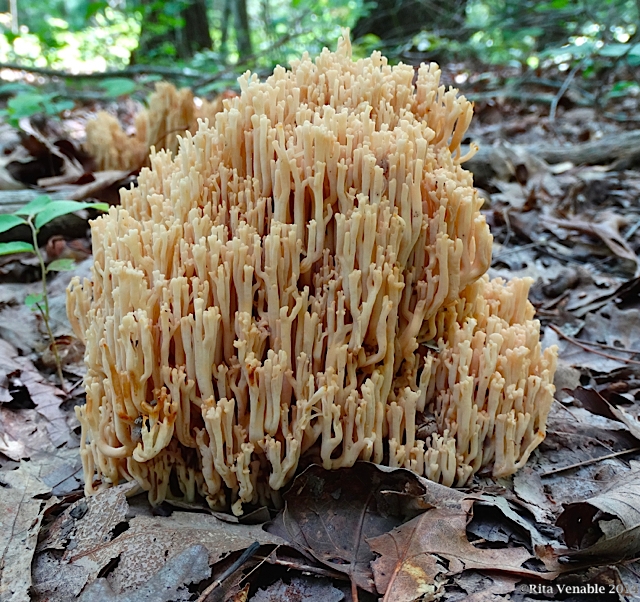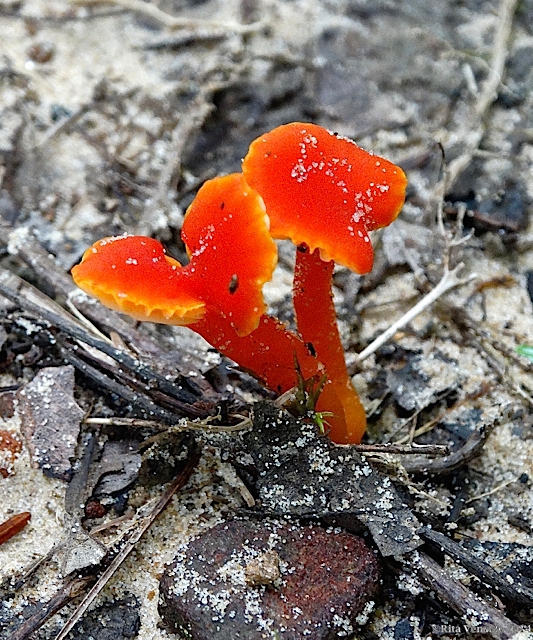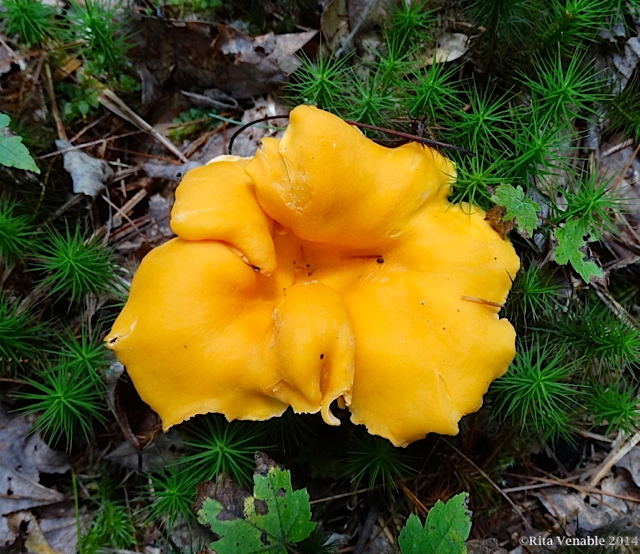Hooray for a relaxing weekend of camping on the Cumberland Plateau! As we excitedly rolled our rig into Bandy Creek Campground at Big South Fork National Recreational Area near Oneida, Tennessee, the ranger at the check-in kiosk updated us that we were in the middle of black bear mating season. It was August; female black bears were still living and eating with the previous year’s cubs and had been seen in the area recently. The ranger handed us a bear brochure educating us of how to store our food and what to do in case we encountered a black bear. “There has never been a bear incident at Big South Fork,” she told us with a smile.
I’d be lying if I said that the thought of meeting up with a black bear didn’t scare me. Actually, I began to think of all the ways we were vulnerable—food in the cooler and camper, eating outside, walking to and from the bathhouse in the dark, cooking marshmallows on the campfire, and Argo—what would he do if he saw a bear?
After setting up camp, Phil, Argo, and I strolled into the nearby visitor’s center. After greeting each staff member eagerly, Argo was introduced to the full body mount of a black bear in the corner of the room.
“Some dogs really freak out at that bear,” Park Ranger Roland said.
Still on the leash, Phil led Argo to the once-living-now-not bear and let him sniff. He was briefly interested, but did not bark, whine, twirl, hide behind us, or look apprehensive at all. In fact, he showed much more curiosity about the plastic replica of bear scat on a nearby reachable shelf than the bear.
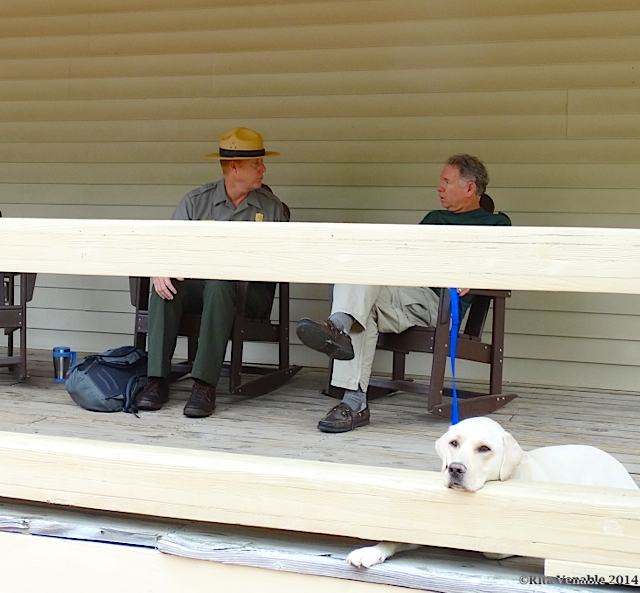
The next morning there was a park ranger porch talk. We got to choose the subject for the talk and we said, “anything but bears.” A campfire talk about black bears was scheduled for that evening and we didn’t want to overload on bear information. We settled on the topic of history of the area.
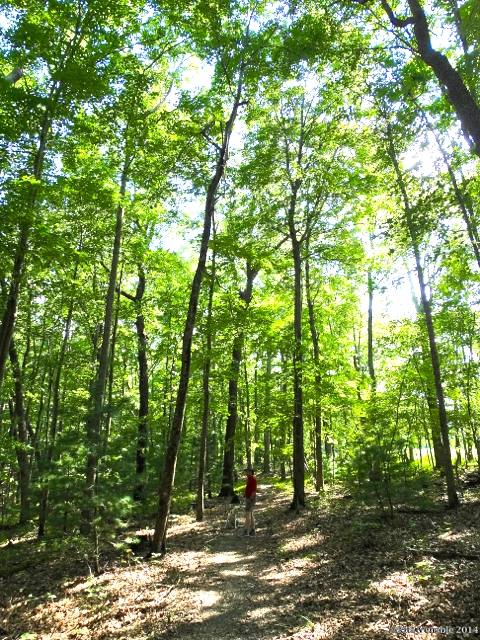
Allayed of our fears somewhat, Phil and I hiked the Oscar Blevins Trail that afternoon where, naturally, we saw a black bear. Argo, who was on a leash, was with us and he and Phil were in the lead. We rounded a corner (about at interpretive stop #10) and saw a female with at least one cub. Our party froze including Argo. We backed up slowly and Phil made some noise. She reared up on her hind legs to see us better or smell us. Argo stayed in place and did not bark or move toward the bear. The female bear ran away. I actually thought about getting a photo but she was too quick for me, and I wasn’t about to pursue her!
As we pondered whether to continue or go back the other way, we heard a rustling sound in the woods. We decided that it might be another bear cub and we did not want to get between the mother and her cub. We retreated adding a total of an extra two mikes to our hike. It was worth it.
Looking back on this encounter, we concluded we had done a few things right. First, we obeyed the leash rule possibly preventing Argo from provoking the bear. Second, we did not panic but tried to remember what we had been told to do in the event of seeing a bear. Third, we retreated. At the bear program that evening, Ranger Roland told us we probably did the right things.
However, it is one thing to read and discuss bears and quite another to meet one in person! Like riding a horse or jumping off of the high dive, is it scary enough not to do it again? Is our interest in hiking, camping, and photography strong enough to overcome our fear of a black bear encounter?
Probably. We learned about our dog and ourselves. Argo can be trusted and we survived. We really liked Big South Fork, but if we go again during black bear activity periods, we might choose to go on ranger led hikes or hike in areas where black bears have not been sighted recently. Some risks just must be taken, however, and some fears must be overcome in order to pursue passions, but we still don’t like encountering black bears on the trails. Still, Phil and I would do it all over again and we’re pretty sure Argo would, too.
Note: Dogs should be kept from sampling the mushrooms along the trail. Some are poisonous and the American Society for the Prevention of Cruelty to Animals (ASPCA) recommends that animals do not ingest wild mushrooms.
